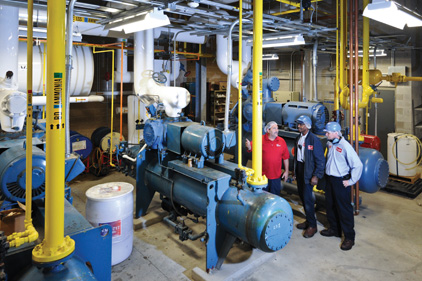
It is not surprising that consumer confidence in the overall safety of the food supply has dropped dramatically as a result of recent recalls. Food safety is in the news and a hot topic of discussion at most industry forums.
The dairy industry has done an excellent job of producing safe products for many years by following the regulations of the Pasteurized Milk Ordinance (PMO). However, dairy products have become a part of the national and global food supply. Hazard Analysis Critical Control Points (HACCP) is recognized as an alternate program under the PMO and is an integral part of the Global Food Safety Institute-recognized food-safety certification programs.
HACCP is a global standard for food safety. Developed by Pillsbury in the 1960s and regulated in the United States under 21 CFR 120 and 123, HACCP is an integral part of the GFSI certification programs.
Many of the facilities that have produced and distributed tainted food in recent years have had HACCP programs in place. Did HACCP fail? What can the food industry do to reverse these disturbing trends?
Is pending congressional legislation the solution? Even if the Food and Drug Administration and U.S. Department of Agriculture receive more funding, the responsibility for overseeing more than 40,000 food manufacturers and producers in the United States alone is overwhelming. Regulations alone will not do the job.
Dairy and food processors must assume this responsibility. Processes must be evaluated and parameters established to ensure safe, quality foods. A HACCP program is a natural for this type of self analysis.
Based on risk assessment, HACCP maintains tight control over highly perishable foods in place of the traditional “hold, test and release” approach.
In retrospect, it has been prerequisite program failures rather than HACCP failures that have produced tainted food. A HACCP plan must be built on a foundation of sanitation standard operating procedures and prerequisite programs that include the following:
• Buildings and equipment maintenance
• Effective cleaning and sanitation programs
• Safe water, steam and ice
• Effective pest-control programs
• Control of toxic materials
• Employee training
• Adherence to Good Manufacturing Practices
Are you maintaining these SOPs and prerequisites as well as your HACCP plan? HACCP works, but only when these fundamentals are faithfully maintained. It is widely recognized as the global standard for food safety.
Henry E. Randolph is the founder of Randolph Associates, Inc., which advises dairy processors about improving quality and operations. This article originally appeared in the October 2009 Dairy Foods.
The Seven Principles of HACCP
1. Hazard analysis: Potential biological, chemical and physical hazards must be evaluated for each ingredient and at each step of the manufacturing process.
2. Identify critical control points: Those points in the process where control can be applied to eliminate or reduce an identified hazard to an acceptable level.
3. Establish critical limits: Defined as the maximum or minimum parameter that must be met to eliminate or reduce the hazard to an acceptable limit.
4. Establish monitoring requirements: Used to assess whether the critical limits are met and to establish records for verification.
5: Establish corrective actions: The actions taken to bring a CCP back under control and the steps taken to prevent further contamination of the product as well as the steps taken to prevent the distribution of potentially contaminated product.
6: Establish verification procedures: Verification assures the plan is effectively implemented and followed.
7: Establish record keeping and documentation procedures: Includes record retention of types of records kept such as the hazard analysis, the HACCP plan, support documentation and operational records.



